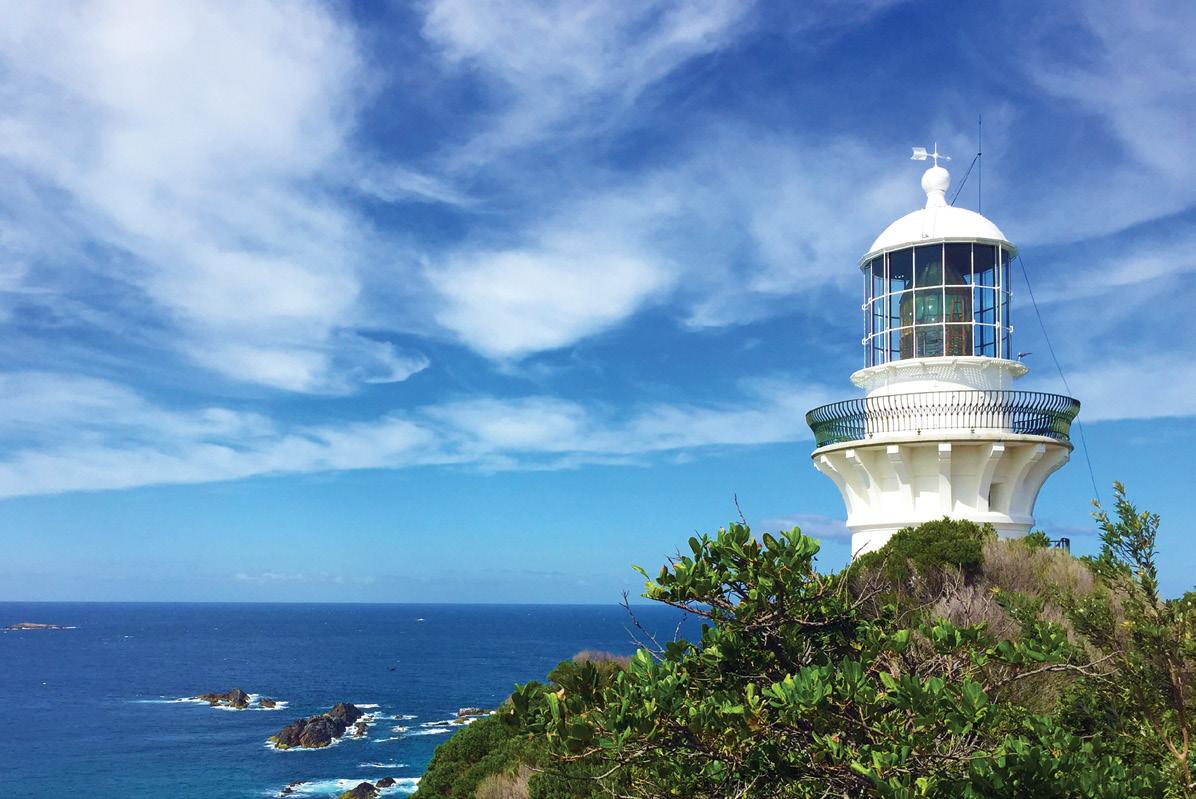
2 minute read
Sugarloaf Point Lighthouse
With its scenic beauty and long white beaches on the land of the Worimi people, the Sugarloaf Point Lighthouse has always been a coveted posting by lighthouse families and today, it remains a major destination along the mid-New South Wales coast.
Highway of lights: Sugarloaf Point Lighthouse built in 1875 is the first in a series designed by Architect James Barnet – Image by Sarah-Jane Lakshman
Advertisement
Completed in December 1875 at a total cost of £18,973, the Sugarloaf Point Lighthouse was the first major lightstation along the ‘highway of lights’ to aid passage up and down the east coast of Australia.
The design of Sugarloaf Point Lightstation was a partnership between colonial architect, James Barnet and President of the Marine Board of NSW, Captain Francis Hixson.
The first of Barnet’s lighthouse designs, it featured design elements that later became characteristic of his style— including the domed oil store, heavily bracketed upper balcony and curved balcony railings.
The tower is only 6.7 metres to the floor of the lantern room and is one of only two in Australia with an external staircase.
While the lighthouse sits atop Sugarloaf Point, three adjoining cottages and outbuildings are nestled further down from the lighthouse on the side of the headland. Before construction could commence, a jetty of over 150 metres and a road to nearby Bungwahl had to be built in order to transport the 1800 tons of brick, cement and other building supplies needed for construction.
These materials would have included the original light—a first order Chance Brothers 16-panel Fresnel lens, powered by a kerosene lamp with a light intensity of 55,000 candela. However in April 1923 the original light was upgraded to a carbide lamp with an intensity of 174,000 candela before being converted to electricity in June 1966. The lighthouse was then finally automated in December 1987.
The current white light has a range of 26 nautical miles, while the alternating red light ranges 13 nautical miles.
During a severe electrical storm on 10 July 1900 the lighthouse was struck by a bolt of lightning. Although a lightning conductor had been installed, the current passed down through the interior of the tower, exploding the fuel store.
Over the years there have been a number of ship wrecks nearby, as mariners would often travel too near the shore in an attempt to avoid the eastern current, and end up colliding with rocky promontories along the coast.
The worst of these was the wreck of the gold-laden steamer Catterthun, which left Sydney bound for China on 7 August 1895. In wild weather 55 of the people aboard lost their lives when the Catterthun struck Seal Rock just five kilometres away.
Sugarloaf Point Lighthouse is now operated by AMSA and the structures are maintained and operated by the Land and Property Management Authority. The Sugarloaf Point area is part of Myall Lakes National Park, managed by the National Parks and Wildlife Service.








